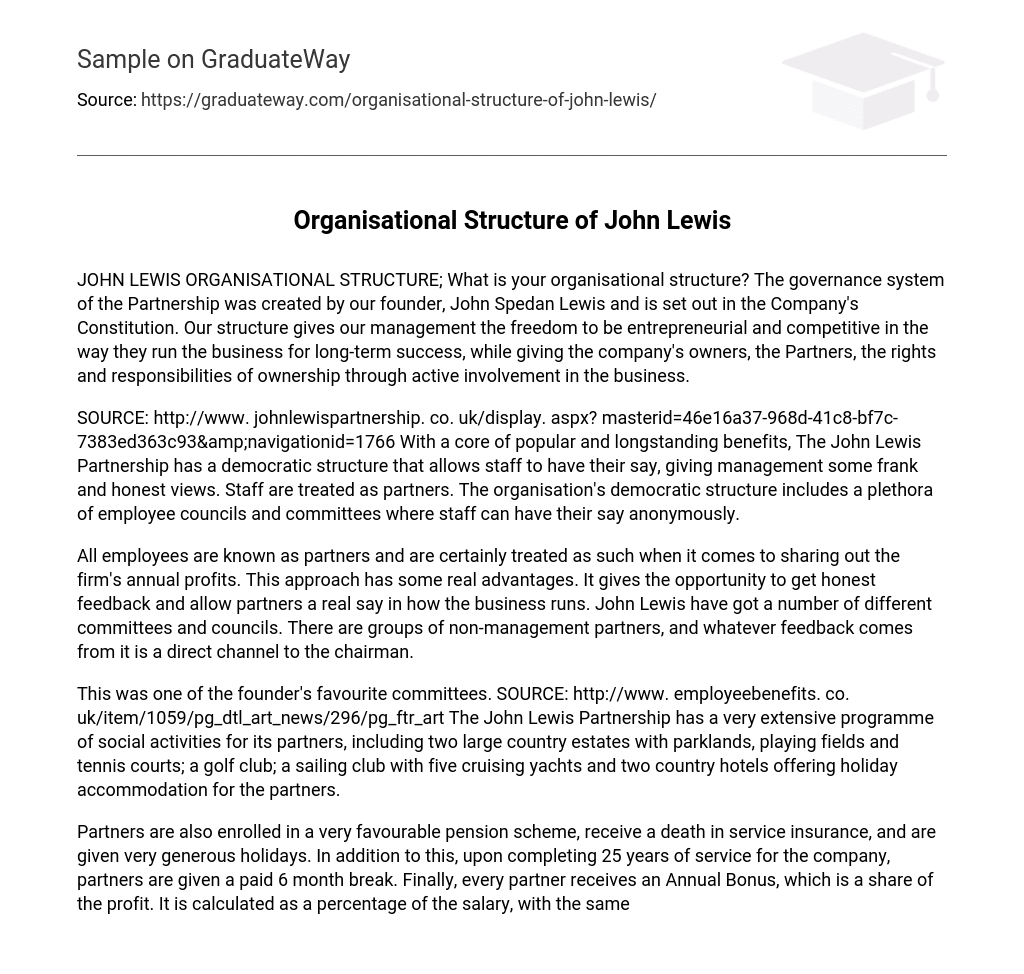JOHN LEWIS ORGANISATIONAL STRUCTURE; What is your organisational structure? The governance system of the Partnership was created by our founder, John Spedan Lewis and is set out in the Company’s Constitution. Our structure gives our management the freedom to be entrepreneurial and competitive in the way they run the business for long-term success, while giving the company’s owners, the Partners, the rights and responsibilities of ownership through active involvement in the business.
SOURCE: http://www. johnlewispartnership. co. uk/display. aspx? masterid=46e16a37-968d-41c8-bf7c-7383ed363c93&navigationid=1766 With a core of popular and longstanding benefits, The John Lewis Partnership has a democratic structure that allows staff to have their say, giving management some frank and honest views. Staff are treated as partners. The organisation’s democratic structure includes a plethora of employee councils and committees where staff can have their say anonymously.
All employees are known as partners and are certainly treated as such when it comes to sharing out the firm’s annual profits. This approach has some real advantages. It gives the opportunity to get honest feedback and allow partners a real say in how the business runs. John Lewis have got a number of different committees and councils. There are groups of non-management partners, and whatever feedback comes from it is a direct channel to the chairman.
This was one of the founder’s favourite committees. SOURCE: http://www. employeebenefits. co. uk/item/1059/pg_dtl_art_news/296/pg_ftr_art The John Lewis Partnership has a very extensive programme of social activities for its partners, including two large country estates with parklands, playing fields and tennis courts; a golf club; a sailing club with five cruising yachts and two country hotels offering holiday accommodation for the partners.
Partners are also enrolled in a very favourable pension scheme, receive a death in service insurance, and are given very generous holidays. In addition to this, upon completing 25 years of service for the company, partners are given a paid 6 month break. Finally, every partner receives an Annual Bonus, which is a share of the profit. It is calculated as a percentage of the salary, with the same





